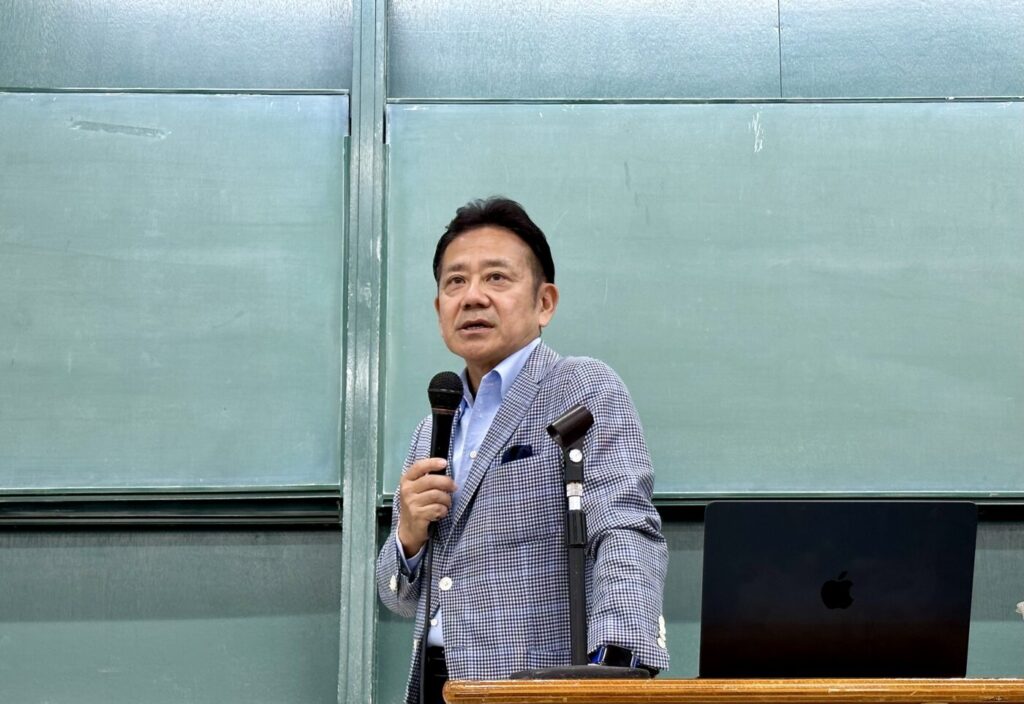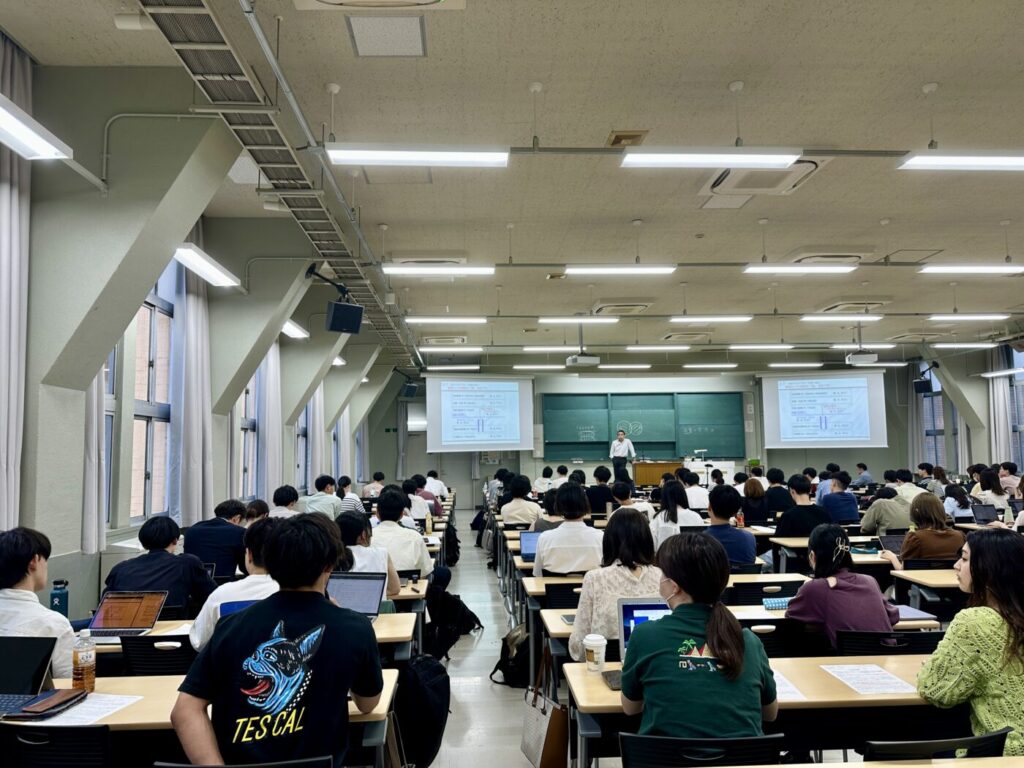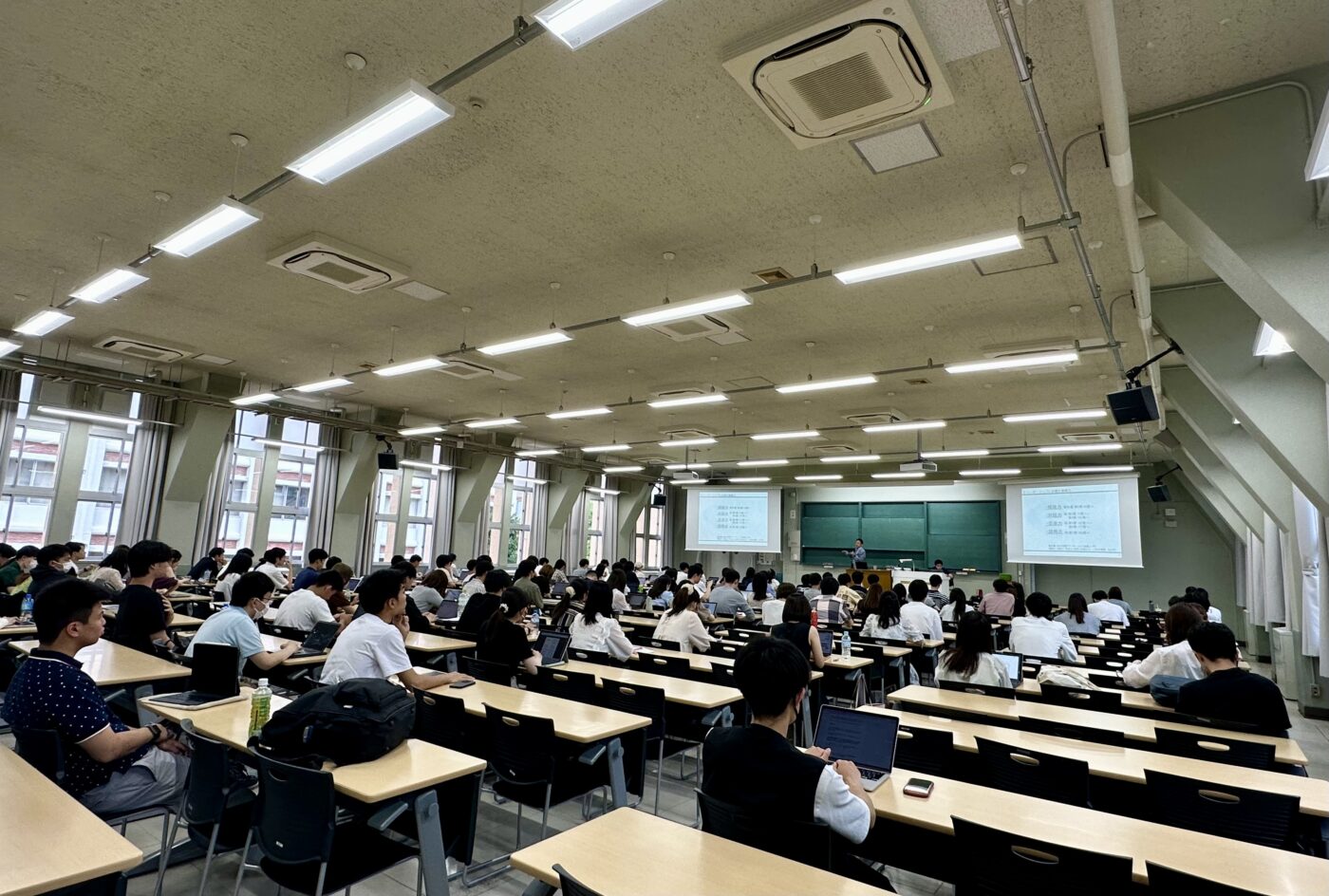Today’s lecture flow
▼ Professor Tamura – (Lecture) The Importance of Logic and Preparations (SMATO Approach) in Japanese Negotiation Studies
▼ Professor Tamura and TA Koyama – (Exercise) Cultivating Practical Skills through Simulated Negotiations
In the first half, we learned about the elements of Japanese negotiation studies: logic, preparation, and on-site practice, focusing on logic and preparation.In particular, the importance of the SMATO approach in preparation, which involves Situation Assessment (S), Mission (M) setting, and creative Options (O), was emphasized.
In the second half, to put the lecture’s teachings into immediate practice, we engaged in one-on-one simulated negotiations. During the post negotiation’s debriefing session (we shared our roles and engaged in group discussions), many students realized that they had not successfully elicited information from their negotiation partners.
Learning of the students – Extracts from the reflection sheets submitted after the lectures
●Fourth-year student in the Department of literature
This time, I had the chance to do a simulated negotiation for the first time, and it was a very valuable experience to see how a single approach can change the course of business in a short amount of time.
I believe we reached an agreement through the negotiation.However, during the process, I felt both enjoyment and difficulty.I have two main points of reflection.The first is that I couldn’t question things thoroughly enough. The second is about how I used my cards.
Regarding the first point, I proceeded with the conversation without knowing the negotiation partner’s background or history.I believe if I had asked questions about that, I could have understood their perspective better.As for the second point, even though I had cards that would have pleased the other party, I struggled to choose the right moment to use them.
What these two points have in common is that although I reached the goal I had in mind, there is still room for improvement in the process. Therefore, I want to train myself to be more flexible when negotiating in actual business situations.I don’t think things will go smoothly in real life as they did in the simulation, but it was a valuable opportunity to proactively learn about what to keep in mind during negotiations.
●Third-year student in the Department of Law, Faculty of Law
In preparing for the negotiation, I focused on the S and M of SMATO, listing positive and negative information about my role.Then, I thought about how the other party might react to the negative aspects.
The simulated negotiation was very challenging.First, I didn’t know what information the other party had or how they perceived our side, so I negotiated while trying to figure things out as we went along.
Next, it was difficult to respond when the other party presented a very convincing argument.After the negotiation, when we looked at each other’s roles, I realized that I had intentionally left some things vague, thinking it would be better not to mention them explicitly.If I had been more specific, I could have made the other party more anxious.I also realized that if I had asked more detailed questions, I could have uncovered the other party’s weaknesses.I felt the importance of getting to know the other party in this negotiation, especially learning how to ask and listen effectively.


 Twitter
Twitter Instagram
Instagram
